Reddish hapalopilus (Hapalopilus rutilans)
- Division: Basidiomycota (Basidiomycetes)
- Subdivision: Agaricomycotina (Agaricomycetes)
- Class: Agaricomycetes (Agaricomycetes)
- Subclass: Incertae sedis (of uncertain position)
- Order: Polyporales (Polypore)
- Family: Phanerochaetaceae (Phanerochaetaceae)
- Genus: Hapalopilus (Hapalopilus)
- Type: Hapalopilus rutilans (Hapalopilus reddish)
:
- Versicolor mushroom Schaeffer (1774)
- Boletus suberosus Bulliard (1791)
- Glowing mushroom Person (1798)
- Mushroom rib Schumacher (1803)
- Glowing octopus (Person) Frisian (1818)
- Daedalus bulliardii Fries (1821)
- Polyporus suberosus Chevalier (1826)
- Mushroom nesting (Frieze) Sprengel (1827)
- Daedalea suberosa Duby (1830)
- Polyporus pallidocervinus Schweinitz (1832)
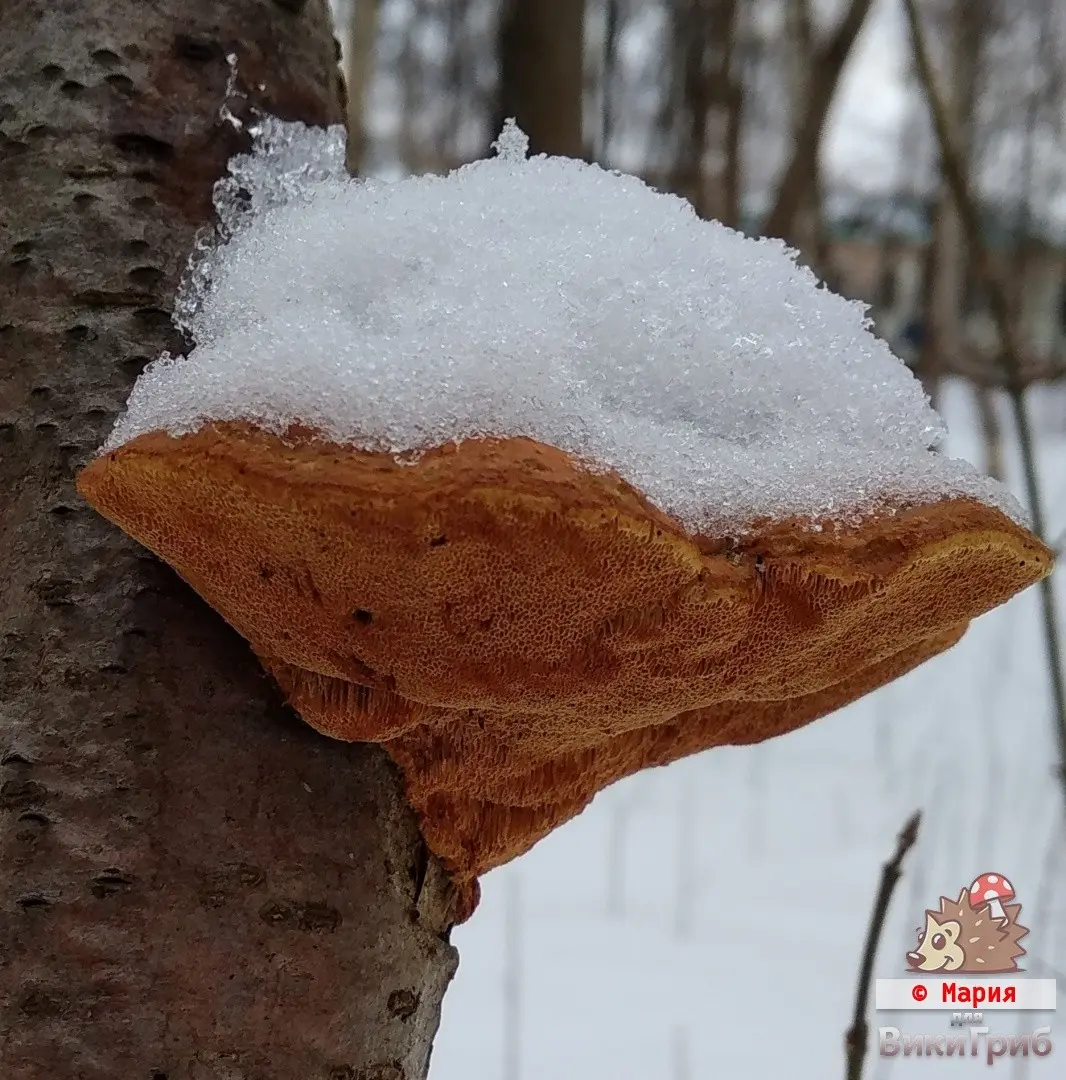
Current name Hapalopilus nidulans (Fries) P. Karsten, Hapalopilus rutilans (Pers.) Murrill
Etymology from απαλός (Greek) – soft, gentle; πίλος (Greek) – 1. Felted wool, felt; 2. Helmet, hat.
Rutilāns (lat.) – reddish; nidulans (English) – accumulating; nesting.
fruit bodies annual sessile, convex, semi-prostrate, sometimes prostrate with characteristic elastic-soft pulp – when squeezed, a tactile sensation is created, similar to squeezing dense foam rubber, when dried, they become light and brittle. Attached to the substrate by a wide, sometimes narrowed lateral base.
Hats reach 100-120 mm in the largest dimension, thickness – up to 40 mm at the base.
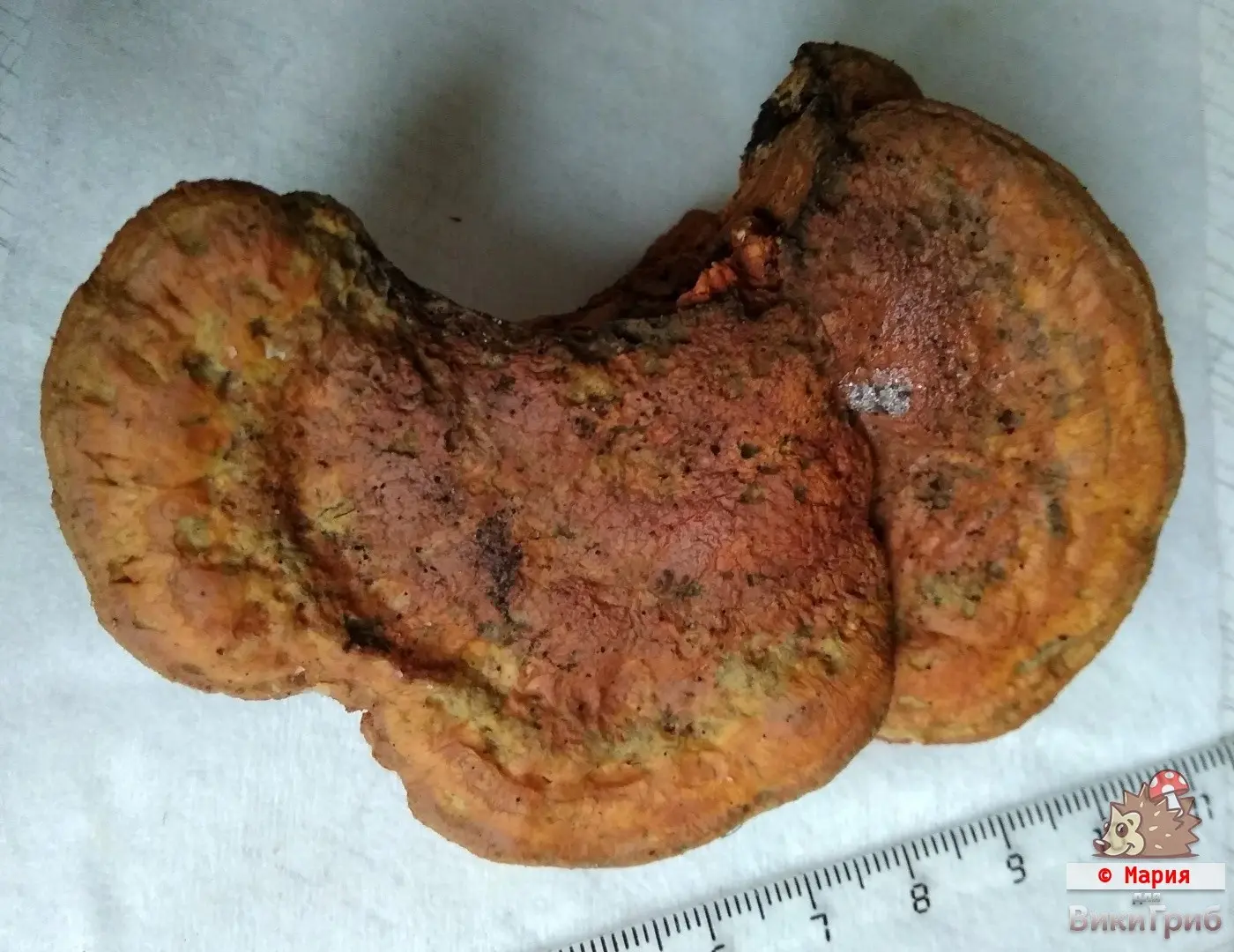
The cap has a sterile surface, partly felt-rough, when ripe it is smooth, ocher or cinnamon-brown, without zoning. Mild concentric zones are rarely observed. The edge of the cap, as a rule, is smoothed, rounded. After drying, the entire sporophore becomes very light. Grows singly or in groups pyramidally one above the other.
Pulp fibrous porous, stiffens and becomes brittle when dried, light brown, lighter closer to the edge.
The smell of the fungus freshly separated from the substrate resembles anise, after a few minutes it changes to the aroma of bitter almonds and subsequently becomes unpleasant, similar to the smell of rotten meat.
Hymenophore tubular, pores rounded or angular, 2-4 per millimeter, tubules of the same color with pulp up to 10-15 mm long.
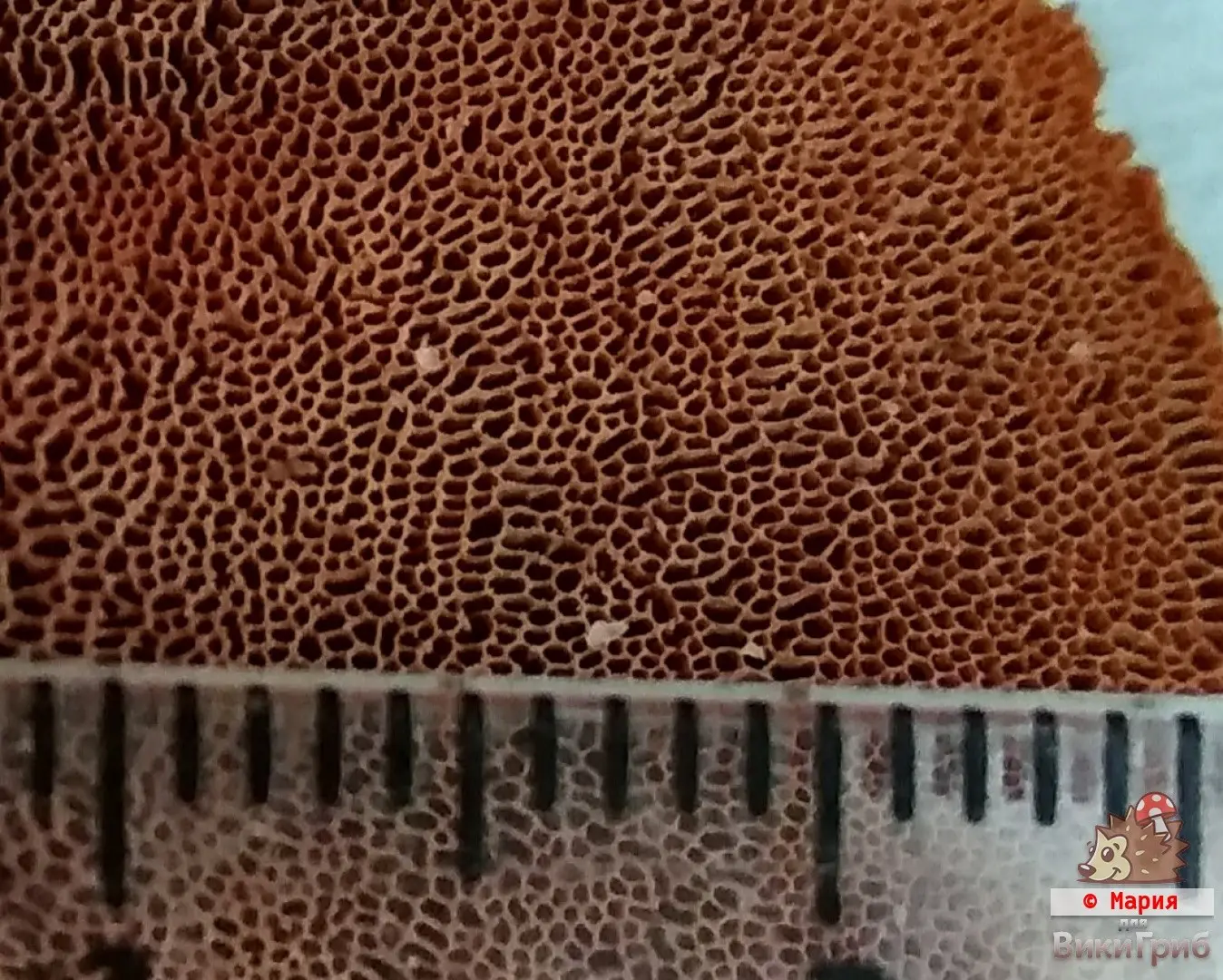
In mature large mushrooms, the hymenophore often cracks, darkens when pressed.
Leg absent.
Microscopy
Spores 3.5–5 × 2–2.5 (3) µm, ellipsoid, almost cylindrical, hyaline, thin-walled.
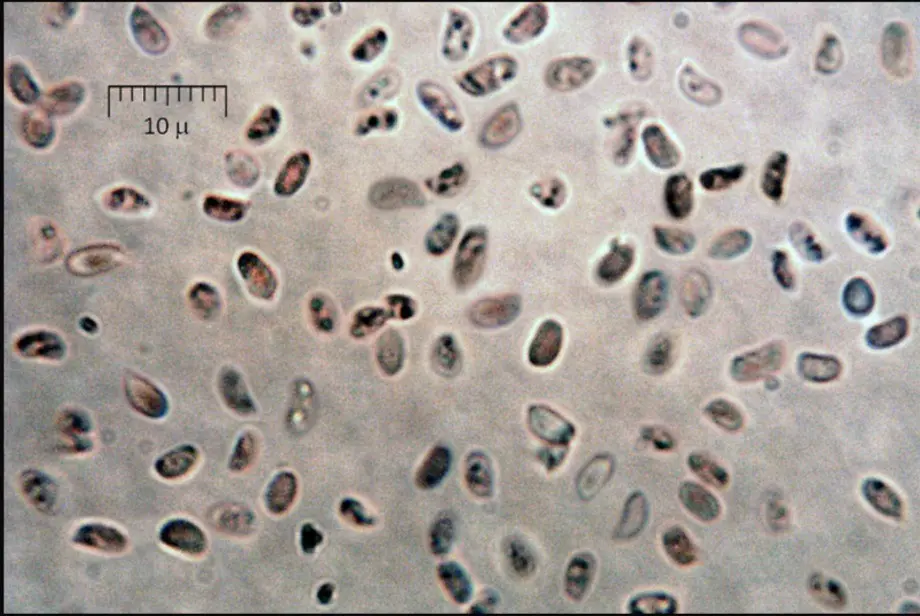
Cystidia are absent. Basidia four-spored, club-shaped, 18–22 × 4–5 µm.
Hyphal system monomitic, hyphae with clamps, colorless, with pinkish or brownish patches.
A characteristic feature of this fungus is the reaction to bases (alkalis) – all parts of the fungus turn bright purple and to an ammonia solution – a purple-lilac color occurs.
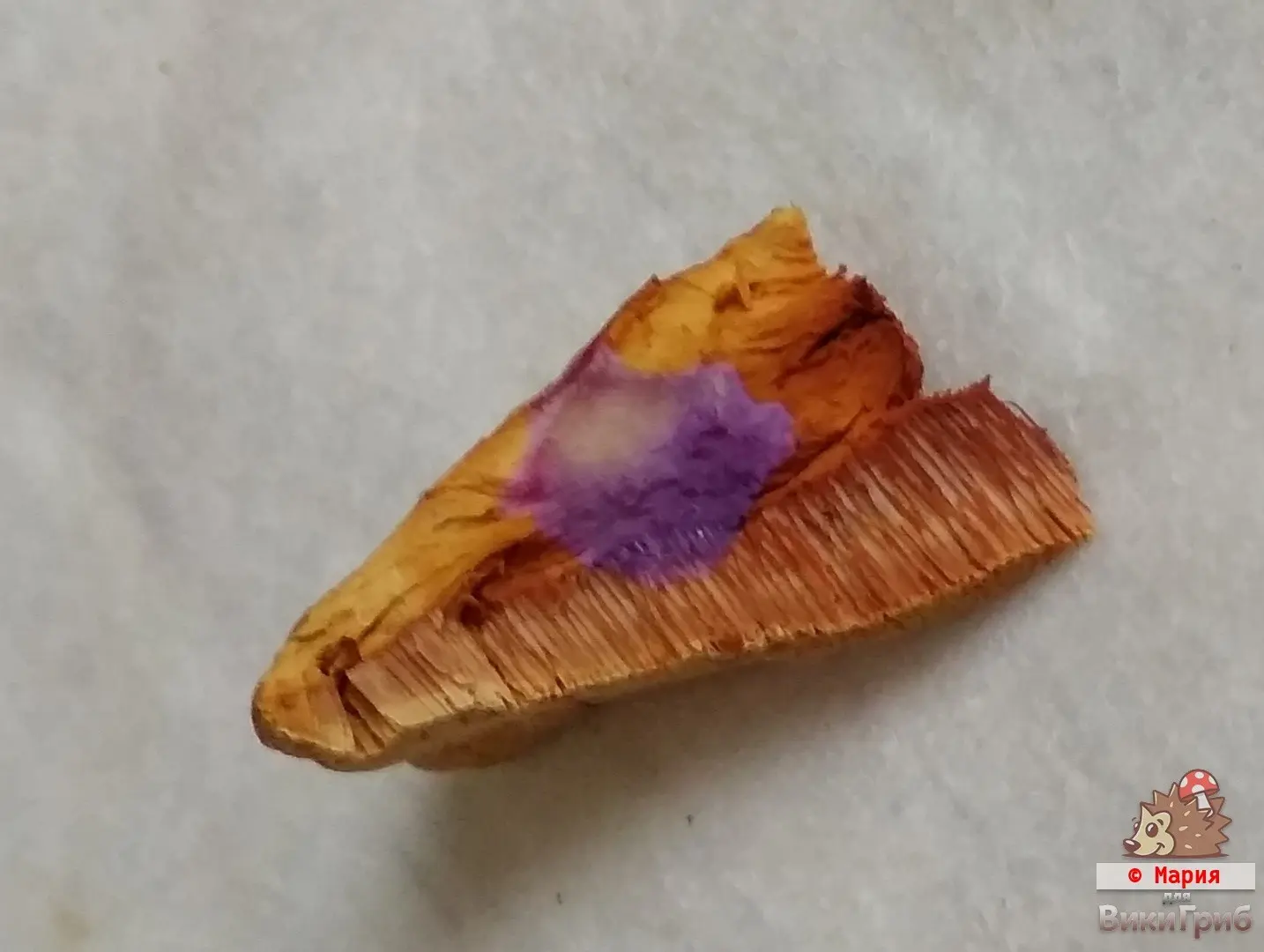
Settles on branches and dead trunks, bark of broad-leaved trees (birch, oak, poplar, willow, linden, hornbeam, beech, ash, hazel, maple, horse chestnut, Robinia, plum, apple tree, mountain ash, elder), more often on oak and birch , in exceptional, very rare cases, was found on coniferous trees (spruce, fir, pine). Causes white rot. Widely distributed in the Northern Hemisphere: Western Europe, Our Country, North Asia, North America. Fruiting from June to November.
Inedible, poisonous.
Hapalopilus currant (Hapalopilus ribicola) occurs exclusively on currants.
Hapalopilus saffron yellow (Hapalopilus croceus) is red-orange.
Haplopilus salmonicolor has a bright orange color with pinkish hues.
- Trametes lignicola var. populina Rabenhorst (1854)
- Haplopilus nidulans (Fries) P. Karsten (1881)
- Inonotus nidulans (Fries) P. Karsten (1881)
- Trametes ribicola P. Karsten (1881)
- Innonotus rutilans (Persoon) P. Karsten (1882)
- Leptoporus rutilans (Persoon) Quélet (1886)
- Inodermus rutilans (Persoon) Quélet (1888)
- Polystictus pallidocervinus (Schweinitz) Saccardo (1888)
- Polyporus rutilans var. ribicola (P. Karsten) Saccardo (1888)
- Polystictus nidulans (Fries) Gillot & Lucand (1890)
- Polyporus rutilans var. nidulans (Fries) Costantin & LM Dufour (1891)
- Phaeolus nidulans (Fries) Patouillard (1900)
- Lenzites bulliardii (Fries) Patouillard (1900)
- Hapalopilus rutilans (Persoon) Murrill (1904)
- Polystictus rutilans (Persoon) Bigeard & H. Guillemin (1913)
- Polyporus conicus Velenovský (1922)
- Polyporus ramicola Velenovský (1922)
- Agaricus nidulans (Fries) E.H.L. Krause (1933)
- Phaeolus glowing f. The Recumbent Pilate (1936) [1935]
- Hapalopilus ribicola (P. Karsten) Spirin & Miettinen (2016)
Photo: Maria.









